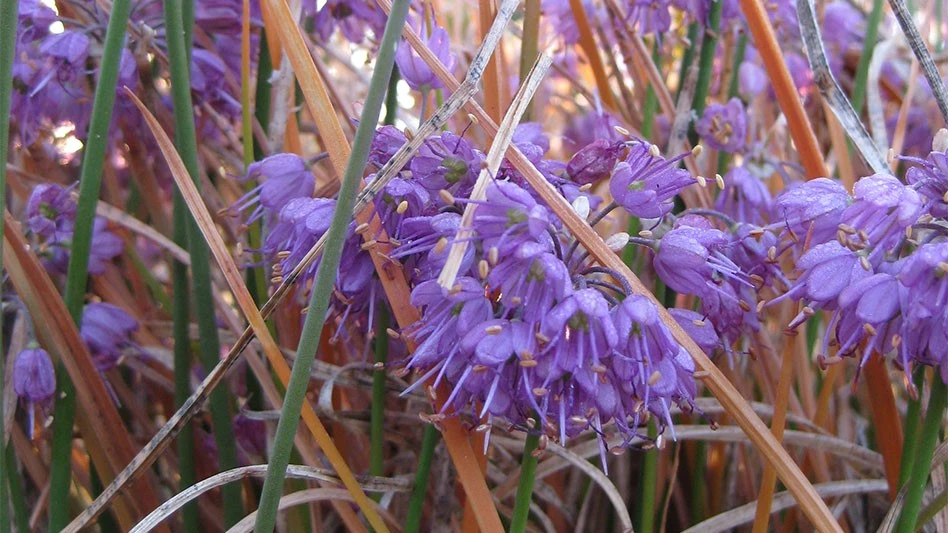

When we consider late-blooming perennials in the garden, we’re typically interested in flower color that contributes from very late summer into early fall and hopefully up to that first hard frost. Some of the various goldenrods, asters, perennial mums and late-blooming monkshood typically come to mind for me in the Midwest. However, one of my favorite perennials that I don’t even expect to bloom until early autumn is the ‘Ozawa’ Japanese onion. I typically get my best photographs of peak bloom for this compact selection of Thunberg’s onion (Allium thunbergii) in early October. What’s amazing is that I can photograph this bulbous, clump-forming perennial well into November and December where it still captures attention in the cold landscape as a dormant but ornamental contributor.
This species ornamental onion is native to Japan, Korea and coastal China and has wide adaptability in our gardens. Reaching only 12” tall when in bloom within thin, grassy foliage, ‘Ozawa’ really shines with loose, globular, purple-pink flower clusters. Prominent orange anthers are noteworthy at peak bloom and late season pollinators will appreciate the flowers as well. ‘Ozawa’ is considered to have slightly larger flowers than the straight species as well. Flowering time in the Midwest is typically late September through October. ‘Ozawa’ will shrug off light frosts and even when hard frost arrives, the foliage turns a yellow-orange and the flowers are “freeze-dried” a nice pink that extends in to winter. I’ve photographed shriveled ‘Ozawa’ flowers still showing pink, hovering above snow in December!
This perennial does best in full sun although very light shade can be tolerated. Well-drained soils are ideal and the best selections I’ve observed of this plant have been in sharply drained rock/alpine gardens. Heavy and overly wet soils should be avoided. ‘Ozawa’ is also effective in mass plantings and along border edges where it will steal the autumn show! Deer and rabbits should leave this plant alone, and it has very few insect or disease problems. Propagation is primarily by division although seed grown selections are not uncommon. With the late bloom time, it’s rare to observe reseeding in cooler climates, and I’m not aware that this variety is a prolific reseeder in other locations. I’m surprised this variety is not more commonly found in retail situations.
Why Grow Allium thunbergii ‘Ozawa’?
- Late blooming in the garden
- Attracts pollinators late in the season
- Durability in a wide range of settings
- Excellent in rock gardens and the front of the border Long lasting cut flower

Get curated news on YOUR industry.
Enter your email to receive our newsletters.
Explore the November 2022 Issue
Check out more from this issue and find your next story to read.
Latest from Nursery Management
- Sam Hoadley talks about Mt. Cuba Center's latest evaluation of Solidago sp. for the Mid-Atlantic region
- Countdown to shutdown
- From growing plants to growing people
- Weed Control Report
- Advocacy in action
- Rare Life Plants: A place for the unique
- Crisis of confidence
- A letter from the sponsor: Janna Beckerman, Envu






